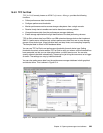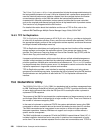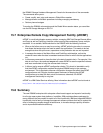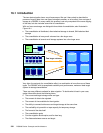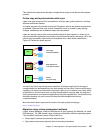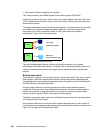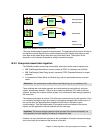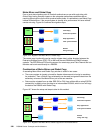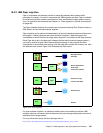
334 DS8000 Series: Concepts and Architecture
16.1 Introduction
The term data migration has a very diverse scope. We use it here solely to describe the
process of moving data from one type of storage to another, or to be exact, from one type of
storage to a DS8000. In many cases, this process is not only comprised of the mere copying
of the data, but also includes some kind of consolidation.
With our focus on storage, we distinguish three kinds of consolidation, also illustrated in
Figure 16-1:
The consolidation of distributed, direct-attached storage to shared, SAN-attached disk
storage
The consolidation of many small volumes into a few larger ones
The consolidation of several small storage systems into a few larger ones
Figure 16-1 Different ways of consolidation
Very often, the set goal of a consolidation effort is a combination of more than one of these
types. The DS8000, with its exceptional scalability and performance, makes an ideal target
system for storage consolidation.
There are many different methods for data migration. To decide what is best in your case,
gather information about the following items:
The source and target storage make and type
The amount of data to be migrated
The amount of time available for the migration
The ability to connect both source and target storage at the same time
The availability of spare disk or tape capacity for temporary storage
The format of the data itself
The consolidation goals
Can the migration be disruptive, and for how long
The distance between source and target
F
e
w
s
t
o
r
a
g
e
s
u
b
s
y
s
t
e
m
s
Few larger volumes
Collection of small volumes
Several storage subsystems
Host
Direct attached storage
S
h
a
r
e
d
S
t
o
r
a
g
e






